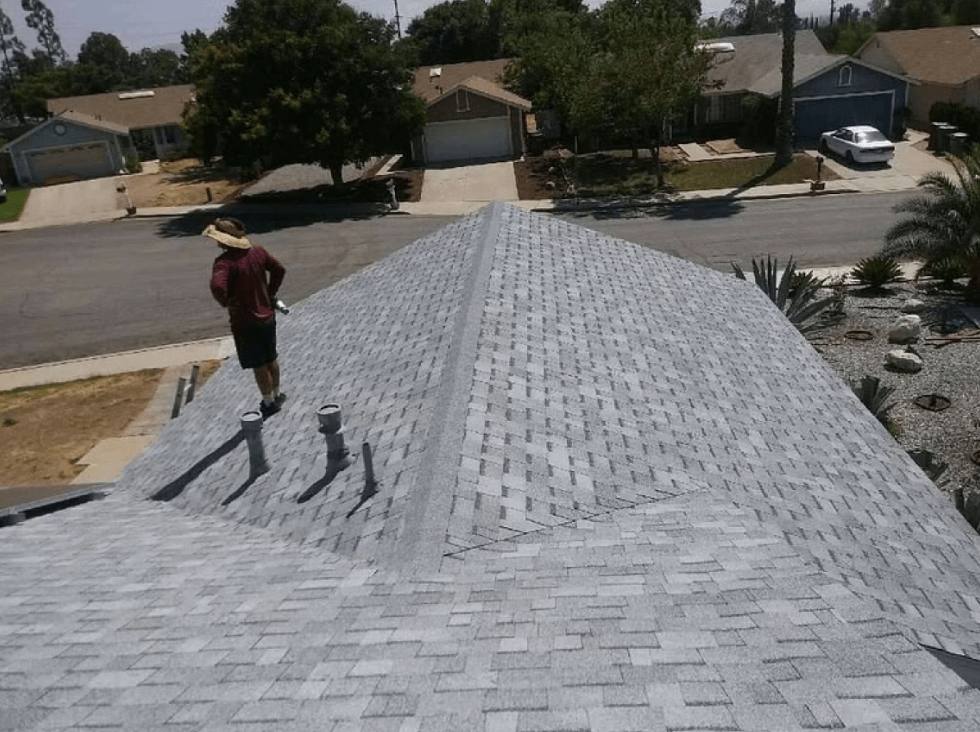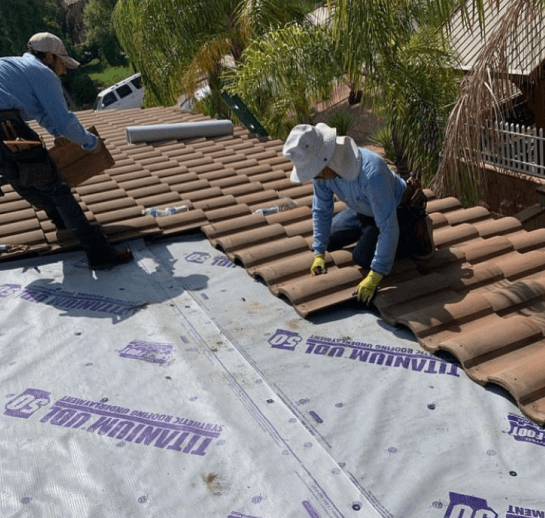How to Prepare Your Roof for Winter/Summer
Daniel Lee • Sep 09, 2024
Seasonal roof maintenance is essential to ensure your roof remains in optimal condition throughout the year. Preparing your roof for winter or summer can help prevent damage, improve energy efficiency, and extend the lifespan of your roofing system. Here’s a comprehensive guide on how to prepare your roof for both winter and summer.
Preparing Your Roof for Winter
Keywords: preparing roof for winter, seasonal roof maintenance
Winter weather can be harsh on your roof, with snow, ice, and freezing temperatures posing significant challenges. Proper preparation can help prevent damage and ensure your roof performs well throughout the colder months.
Inspect and Clean Gutters
Keywords: seasonal roof maintenance
Why It Matters: Clogged gutters can lead to ice dams and water backup, which can cause leaks and damage to your roof and home’s interior.
What to Do: Clean out leaves, twigs, and debris from your gutters and downspouts. Ensure that water can flow freely and that your gutters are securely attached.
Remove Snow and Ice
Keywords: preparing roof for winter
Why It Matters: Excessive snow and ice can add weight to your roof and increase the risk of ice dams, which can lead to leaks and structural damage.
What to Do: Use a roof rake with a long handle to gently remove snow from your roof. Avoid using sharp tools or climbing on the roof yourself, as this can cause damage. Consider professional snow removal services if needed.
Check for Ice Dams
Keywords: preparing roof for winter
Why It Matters: Ice dams form when heat escapes from your home and melts snow on your roof, which then refreezes at the eaves. This can cause water to back up under shingles and lead to leaks.
What to Do: Ensure your attic is well-insulated and ventilated to minimize heat loss. Consider installing heat cables along the eaves to prevent ice dam formation.
Inspect Roof for Damage
Keywords: seasonal roof maintenance
Why It Matters: Pre-existing damage can worsen during winter, leading to leaks and further issues.
What to Do: Conduct a thorough inspection of your roof for damaged or missing shingles, cracked flashing, and other issues. Address any problems before winter sets in.
Check Attic Insulation and Ventilation
Keywords: preparing roof for winter
Why It Matters: Proper insulation and ventilation help regulate temperature and prevent ice dams.
What to Do: Ensure your attic has adequate insulation to keep heat from escaping. Check for proper ventilation to allow moisture to escape and maintain a balanced temperature.
Preparing Your Roof for Summer
Keywords: summer roof care, seasonal roof maintenance
Summer heat can be tough on your roof, with high temperatures and UV rays potentially causing wear and tear. Proper summer roof care can help maintain your roof’s condition and energy efficiency.
Inspect and Clean Gutters
Keywords: summer roof care
Why It Matters: Summer storms can bring heavy rain, and clogged gutters can lead to water damage.
What to Do: Just like in winter, ensure gutters and downspouts are clear of debris to allow for proper drainage.
Check for Roof Damage
Keywords: seasonal roof maintenance
Why It Matters: High temperatures and intense UV rays can cause roofing materials to deteriorate over time.
What to Do: Inspect your roof for signs of damage such as cracked or missing shingles, blistering, or other wear and tear. Repair any issues promptly to prevent further damage.
Maintain Roof Ventilation
Keywords: summer roof care
Why It Matters: Proper ventilation helps reduce heat buildup in the attic, which can lead to increased cooling costs and potential roof damage.
What to Do: Ensure that your roof ventilation systems are functioning correctly. This includes ridge vents, soffit vents, and any other ventilation systems that help regulate attic temperature.
Clean the Roof Surface
Keywords: summer roof care
Why It Matters: Debris and dirt can affect the performance of your roof and contribute to damage over time.
What to Do: Remove leaves, branches, and other debris from your roof. Use a soft brush or blower to avoid damaging the roofing material.
Check for Algae and Moss Growth
Keywords: summer roof care
Why It Matters: Algae and moss can grow on roofs in humid or shaded conditions, potentially causing damage and affecting aesthetics.
What to Do: Inspect for signs of algae or moss. Clean affected areas with appropriate roof cleaning solutions and consider installing zinc or copper strips to prevent future growth.

By Daniel Lee
•
09 Sep, 2024
A roof warranty can be a crucial aspect of your roofing system, offering peace of mind and protection against potential issues. However, not all warranties are created equal, and understanding what’s covered and what isn’t can help you make an informed decision when selecting a roofing product or contractor. Here’s a comprehensive guide to help you navigate roof warranties and understand their coverage. 1. Types of Roof Warranties Roof warranties typically fall into two main categories: manufacturer’s warranties and contractor’s warranties. Each type serves a different purpose and covers different aspects of your roofing system. Manufacturer’s Warranty: This warranty is provided by the company that manufactures the roofing materials. It typically covers defects in the materials themselves. Contractor’s Warranty: This is offered by the roofing contractor who installs the roof. It usually covers issues related to the installation process, such as workmanship errors. 2. What’s Covered Manufacturer’s Warranties Material Defects: This warranty usually covers defects in the roofing materials, such as premature deterioration, manufacturing flaws, or issues with the product’s performance. Longevity: Many manufacturer’s warranties specify the expected lifespan of the roofing materials, offering coverage for a certain number of years. Contractor’s Warranties Workmanship: This warranty generally covers issues arising from improper installation, including problems like leaks or loose shingles that result from installation errors. Repair Costs: If installation issues occur, the contractor’s warranty may cover the cost of repairs or corrections needed to address the problem. 3. What’s Not Covered Manufacturer’s Warranties Improper Installation: Most manufacturer’s warranties do not cover issues resulting from improper installation or application of the roofing materials. Routine Maintenance: Regular maintenance and inspections are typically not covered under the manufacturer’s warranty. Homeowners are responsible for routine upkeep to ensure the roof remains in good condition. External Damage: Damage caused by external factors such as severe weather, vandalism, or accidents is usually not covered by the manufacturer’s warranty. Contractor’s Warranties Material Defects: Contractor warranties generally do not cover defects in the roofing materials themselves; this is typically covered by the manufacturer’s warranty. Wear and Tear: Normal wear and tear due to aging or environmental factors are usually not covered by the contractor’s warranty. Neglect or Abuse: Damage resulting from neglect, improper maintenance, or misuse is generally excluded from coverage under the contractor’s warranty. 4. How to Maximize Your Warranty Coverage Understand the Terms: Carefully review the terms and conditions of both the manufacturer’s and contractor’s warranties. Knowing what is and isn’t covered will help you avoid surprises and ensure you’re aware of your rights and responsibilities. Keep Records: Maintain detailed records of your roofing installation, including receipts, warranties, and any correspondence with the contractor or manufacturer. This documentation can be valuable if you need to make a warranty claim. Schedule Regular Maintenance: Regular maintenance can help ensure that your roof remains in good condition and that you don’t inadvertently void your warranty. Follow the manufacturer’s guidelines for care and upkeep. Choose Reputable Contractors: Work with experienced, reputable contractors who adhere to proper installation practices. This can help prevent issues that might not be covered by either type of warranty. 5. Making a Warranty Claim If you encounter issues that you believe are covered by your warranty, follow these steps to make a claim: Contact the Contractor or Manufacturer: Reach out to the appropriate party based on the type of issue—contractor or manufacturer. Provide Documentation: Submit any required documentation, such as proof of purchase, installation records, and details of the issue. Follow Procedures: Adhere to any specific procedures outlined in the warranty for filing a claim. This may include deadlines, required inspections, or other steps. Conclusion Understanding the intricacies of roof warranties is essential for ensuring you have the protection you need and for managing any potential issues that may arise. By knowing what’s covered, what’s not, and how to maximize and utilize your warranty effectively, you can safeguard your investment and maintain the integrity of your roofing system. Whether dealing with material defects or installation issues, a clear understanding of your warranty will provide valuable peace of mind.
COMPANY INFO
El Cerrito Roofing Pros
El Cerrito, CA 94530
(510) 902-1673
QUICK LINKS
LET'S WORK TOGETHER!
Welcome to El Cerrito Roofing Pros, your trusted local experts for all roofing needs in Contra Costa County and the Bay Area. As a family-owned business with a stellar reputation, we specialize in repair, installation, and maintenance for all types of roofs. Our professional team is dedicated to delivering exceptional customer service, handling every project with care and respect. From personalized consultations to high-quality results, we ensure a seamless experience at competitive prices. Contact us today to start your roofing journey.
